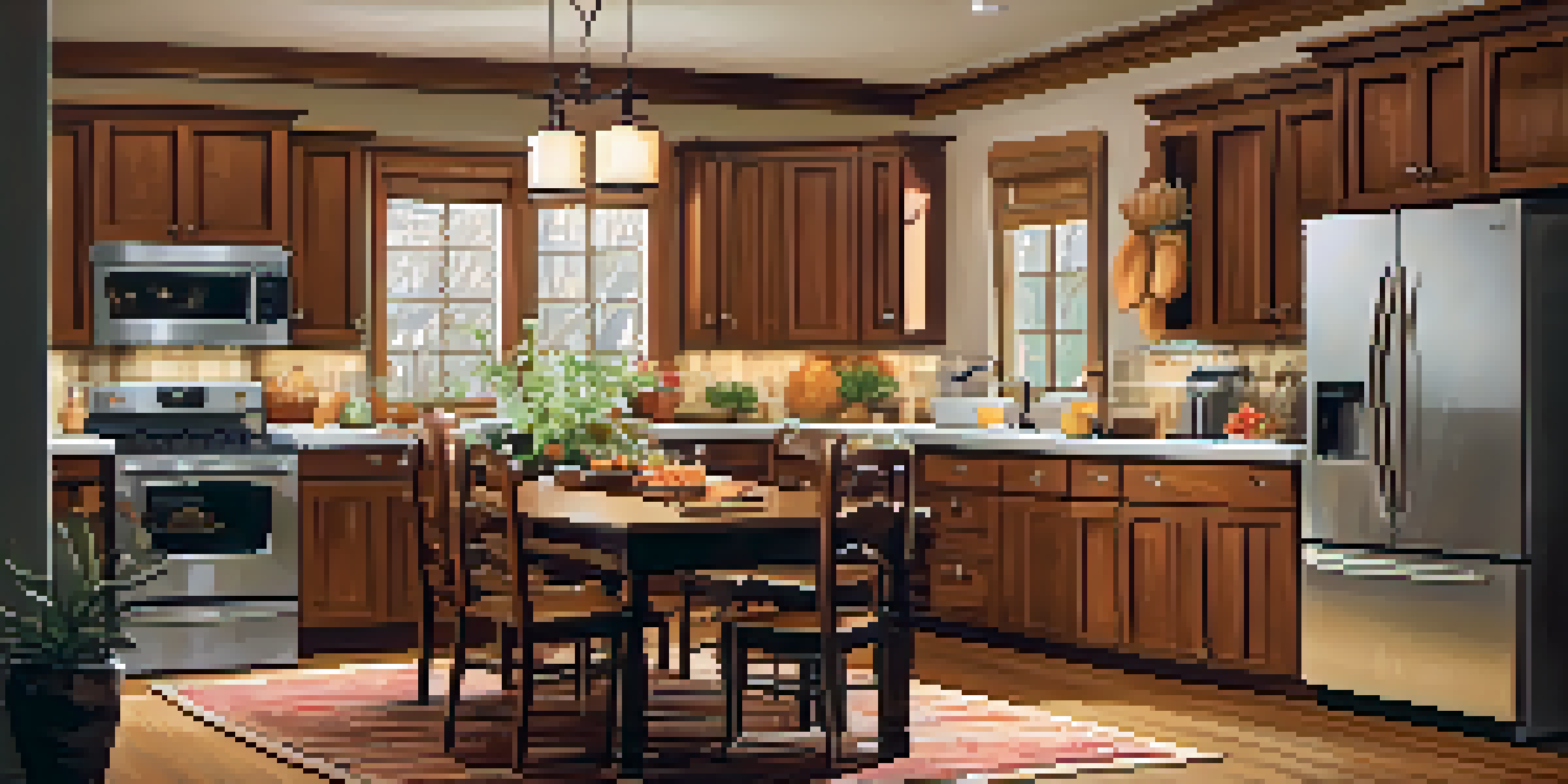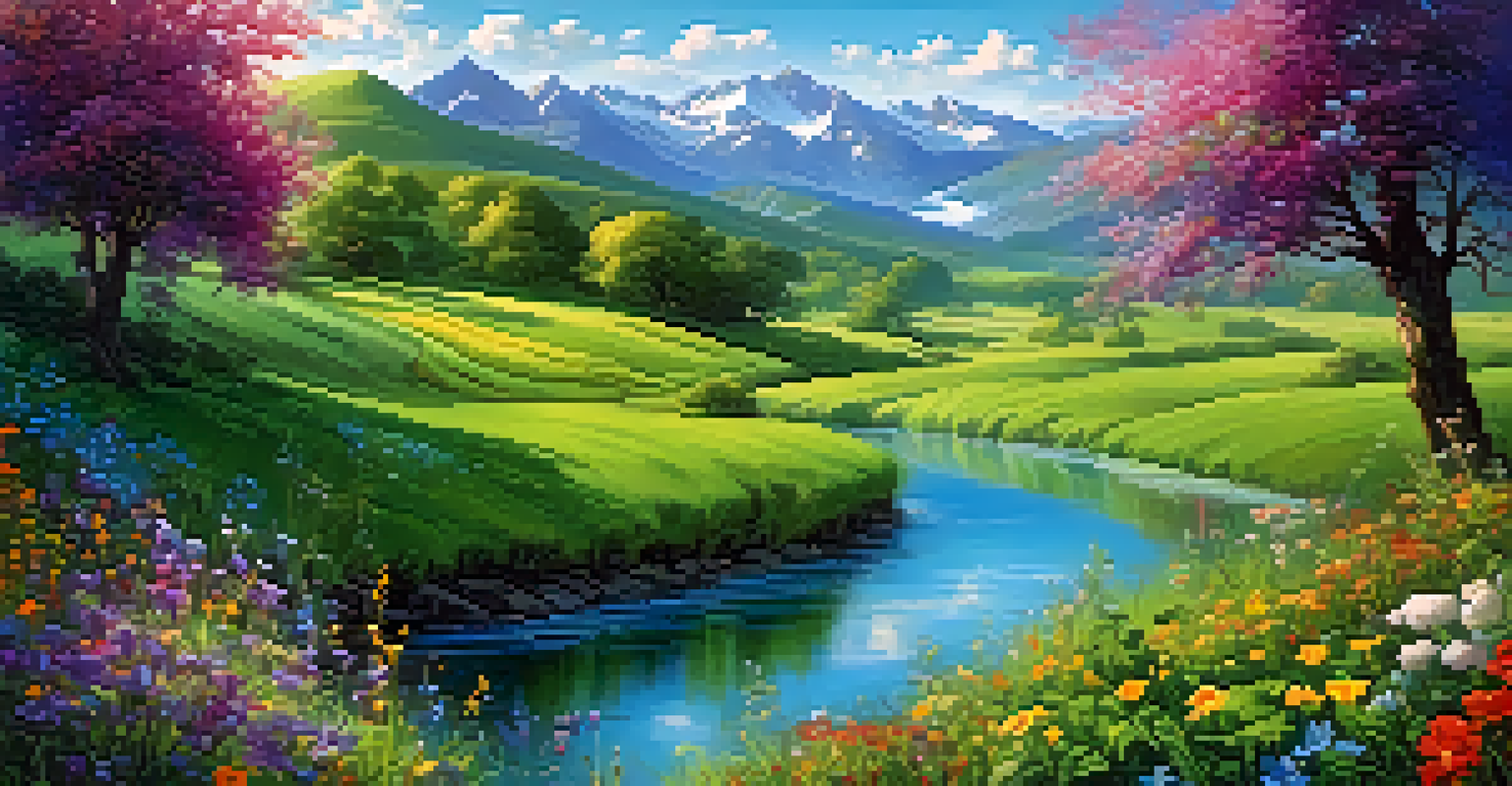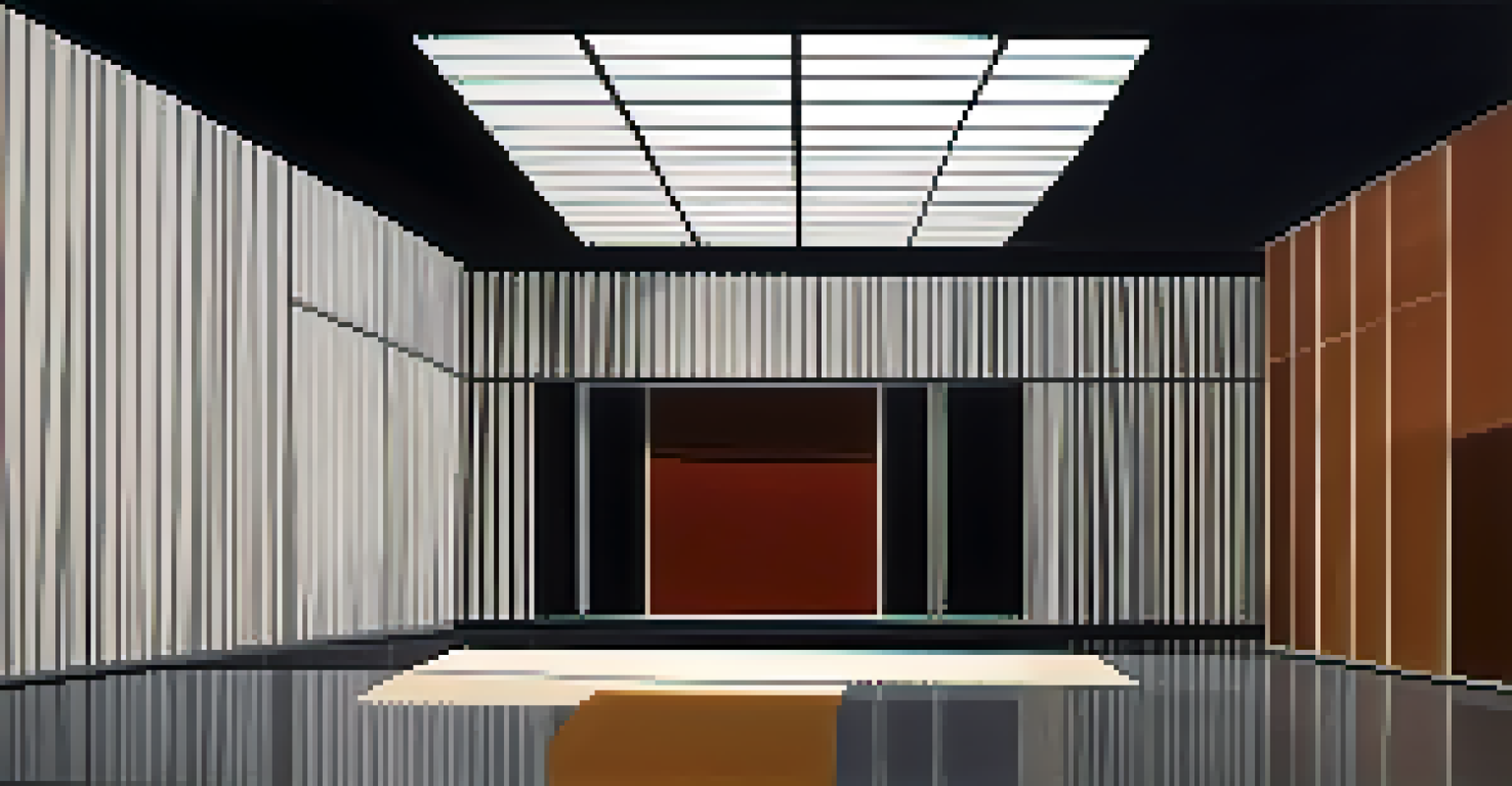Production Design: Creating the Look of Your Film

Understanding Production Design and Its Importance
Production design is the art of creating the visual environment in film. It encompasses everything from the sets to props and costumes, ensuring that every detail supports the story being told. Think of it as the film's aesthetic backbone; without it, a movie would feel flat and uninviting.
Production design is the art of creating the visual environment in film.
Imagine watching a historical drama set in the 1800s, where every piece of furniture, color palette, and fabric is meticulously chosen to transport you to that era. This historical accuracy helps viewers immerse themselves in the narrative, making production design not just important but essential.
Ultimately, production design sets the mood and tone of a film, guiding the audience's emotions and reactions. This art form collaborates closely with directors and cinematographers, ensuring that the visual storytelling aligns with the film's overall vision.
The Role of the Production Designer
The production designer is like the film's architect, responsible for translating the script into a tangible visual world. They work closely with directors to understand their vision, often sketching concepts and collaborating with other departments like art, props, and costumes.

Their role requires a blend of creativity and practicality, as they must consider budget constraints, timelines, and logistical challenges. For example, building a lavish castle set may be ideal, but the designer must also ensure it fits within the production's financial means.
Production Design Enhances Storytelling
Production design creates the visual environment in film, ensuring that every detail supports and enriches the narrative.
Moreover, a production designer must stay updated on trends and historical references, making them versatile and resourceful. Their ability to adapt and innovate can make or break the film's visual appeal, creating a lasting impression on the audience.
Research: The Foundation of Great Production Design
Research is a crucial step in the production design process. Designers dive deep into the time period, location, and cultural nuances to ensure authenticity in their designs. This groundwork is essential for creating a believable world that resonates with the audience.
Good design is obvious. Great design is transparent.
For instance, if a film is set in a bustling 1920s New York City, production designers will study architecture, fashion, and social dynamics of that era to create an accurate depiction. This attention to detail enriches the storytelling, making it more immersive.
Additionally, research often involves location scouting, where designers explore potential filming sites that enhance the film's visual narrative. This process not only informs set design but also influences how scenes are framed and shot.
Collaboration with Other Departments
Production design doesn't exist in a vacuum; it's a collaborative effort involving various departments. The production designer works closely with the director of photography, costume designer, and other key personnel to ensure a cohesive visual style throughout the film.
For example, the choice of colors in the production design should complement the costumes, enhancing the overall aesthetic. This requires constant communication and a shared understanding of the film's vision, making teamwork vital to the process.
Collaboration is Key to Visual Unity
Successful production design relies on close collaboration between the production designer and other departments to maintain a cohesive visual style.
Moreover, the production designer often attends meetings with the director and cinematographer to discuss how lighting and camera angles will interact with the designed spaces. This collaboration ensures that all visual elements work harmoniously, creating a seamless viewing experience.
Creating Mood Through Color and Texture
Color and texture are powerful tools in production design, capable of evoking specific emotions and setting the film's tone. A bright, vibrant color palette might convey joy and energy, while darker shades can create feelings of tension or sadness.
For instance, in a romantic film, warm colors like reds and soft pinks can enhance the sense of intimacy and love. In contrast, a horror film might utilize colder tones and jagged textures to evoke fear and anxiety, guiding the audience’s emotional journey.
Textures also play a significant role; a rough, gritty surface can suggest hardship, while smooth, polished finishes might indicate luxury. By thoughtfully selecting colors and textures, production designers can subtly influence the viewer's emotional response to the story.
Set Design: Building the World of the Film
Set design is where the magic of production design truly comes to life. It involves constructing physical environments that not only look good on camera but also serve the narrative. This means creating spaces that feel authentic and lived-in.
For instance, a cozy kitchen in a family drama might include personal touches like family photos and quirky decor, making it relatable to the audience. In contrast, a sleek, futuristic set in a sci-fi film can evoke curiosity and wonder, immersing viewers in a new reality.
Research Fuels Authentic Design Choices
Thorough research into time periods and cultural contexts is essential for production designers to create believable and immersive worlds.
The process often involves sketching, model-making, and eventually building the sets on location or in studios. Each decision in set design is deliberate, as every element contributes to the overall storytelling experience, making it an essential aspect of production design.
The Impact of Production Design on Audience Experience
Production design significantly impacts how an audience perceives and engages with a film. A well-crafted visual environment can draw viewers in, making them feel part of the story rather than mere observers. This level of immersion enhances their emotional connection to the characters and plot.
For instance, in a fantasy film, lush, vibrant landscapes can transport viewers to another world, sparking their imagination. Conversely, a stark, minimalist set in a thriller can create tension and unease, heightening the suspense of the narrative.

Ultimately, production design goes beyond aesthetics; it shapes the viewer’s entire experience. By carefully constructing the film’s visual landscape, production designers help create memorable moments that resonate long after the credits roll.